As you begin your journey through the exciting and wondrous world of grills, odds are you've run into lingo, buzzwords, and abbreviations very specific to the industry that you might not be familiar with. If you are fresh to the art of grilling and in the process of searching for your very first setup, you may find yourself confused and overwhelmed by all the choices. With more add-ons and configurable options than you can keep up with, how do you know you are getting the best grill for you? Perhaps you are an occasional backyard chef looking to upgrade your outdated BBQ, or an expert hoping to add another piece to your impressive collection. For novices and connoisseurs alike, the grill market can be confusing. With this guide in hand, you'll be armed with the most current information and a clearer idea of your preferences, and you'll soon be ready to navigate the wonderful world of grilling.
Fuel Type
 A gas grill, such as this AOG 24" Post Mount "T" Grill, compared to a charcoal grill, commonly seen in public spaces.
A gas grill, such as this AOG 24" Post Mount "T" Grill, compared to a charcoal grill, commonly seen in public spaces.Beginning to end, fuel type affects every aspect of the grilling process. Preheating time, ease of use, intuitive controls, flavor, and cleanup are just some of the factors influenced by the fuel that powers your heat source. From the simplicity and user-friendly nature of gas grills to the beloved smoky taste of charcoal, to the ease and portability of electric and the time-tested wood-burning method, at the end of the day, fuel type really does come down to preference and priorities.
Electric
Some Electric grills' fuel source is as their name implies: electricity. Due to this, there are no combustible gases present in the unit, which allows for extreme flexibility of use. They don't emit harmful charcoal or gas fumes, making them extremely eco-friendly and better for your lungs; and without a flame, electric BBQs tend to be a safer alternative to other types of open flame grills. Easy to use controls enable you to accurately adjust the temperature of your cooking surface.
On the other hand, the biggest downside of grilling electric is limited heat output and the time it takes for the grill to heat up. For those with a taste for perfectly seared medium-rare steaks, this type of grill might not get hot enough to take you there without over-cooking your interior. Electric grills can cook your meats, fish, or veggies to tasty completion, but it might not offer the same smoky, charred flavors as it's wood and charcoal-burning counterparts. But for urban apartment dwellers, and those with strict condo or HOA rules that disallow grills with other fuel types, the electric grill just might be your saving grace.
Wood Burning and Wood Pellet
True wood-burning grills are hard to find. Using good old-fashioned wood as a fuel source, these grills add function, flavor, and flair to your outdoor cooking space. Wood-burning grills not only add a delicious wood-fired flavor, but they keep your cooking experience as close to natural as possible. For those concerned with the chemicals associated with propane, gas, and even charcoal, a wood-burning grill keeps grilling simple, pure, and fun. Wood-burning grills are a natural conversation piece. Instead of being banished away from the group to your BBQ, watch as your guests gather around your unique grill to watch the show.
For those who love the taste of smoked meats, the pellet grill is a must for your BBQ arsenal. Though one of the lesser-known grill types for novices, the pellet grill is a powerful and convenient option for easily adding a delicate smoke flavor to all your favorite grilled dishes. After selecting your desired temperature on the digital thermometer, this consistent and convenient grill boasts a "set it and forget it" type function which self-adjusts for changes in outside temperature. The hardwood pellets, which fuel the grill's fire, sit in a waterproof side hopper until the grill automatically loads them into the auger, which then carries them to the fire pot. With all processes done completely internally, you will never have to worry about manually adjusting knobs, flare-ups, or bulky propane tanks again. Some models even offer a Wi-Fi model that allows you to control and monitor your grill from the convenience of your smartphone. Because this grill's smoky flavor is always on, pellet grills work wonderfully as a second grill to keep your non-smoke options open.
Pro Tip: For most beginners and intermediate grillers, the choice for fuel source really does come down to two familiar options: charcoal or gas. Although both camps make excellent points for their sides, the ultimate decision is up to you and your preference.
Gas
Extremely convenient, quick, and remarkably intuitive, gas grills are a perfect introduction to the grilling world. Usually ready to go in about ten minutes, gas grills rely on either natural gas or liquid propane as a fuel source. This makes lighting your grill extremely easy. Gas grills often come with some sort of ignition system, usually a push button spark which eliminates the need for easy-to-lose lighters. With handy knobs similar to a range stove, controlling the temperature of your grilling zones is easy and familiar. With all their positive features, Gas grills do somewhat lack in the heat department. Most gas grills max out at around 450 °F, not enough to get a nice, caramelized sear on a steak without overcooking it. However, with recent technology, infrared burners and sear zones make high temperature cooking possible with gas grills. With no ash or soot created in the process, gas grills also tend to be cleaner than other fuel sources.
Pro Tip: Always man your grill. A dreaded flare-up can happen at any time; leaving a grill unattended for even a moment can led to an extremely charred meal. Carry a squirt bottle to tame wild flare-ups.
The one consistent complaint against gas grills is the lack of flavor imparted from the cooking process. Unless you are using a smoker box with flavored wood chips, gas grills just do not give off the signature smoky taste that people associate with BBQ.
Pro Tip: Natural Gas vs Liquid Propane
If a natural gas line isn't accessible or available, then a liquid propane grill might be a more suitable option for you. Liquid propane burns at a higher temperature than natural gas and offers more BTUs per square inch than your natural gas equivalent. Far more portable than a natural gas grill, you can place your liquid propane grill wherever it's needed or store it away when it's not in use. Just make sure you always have an extra tank of propane on hand, so you don't run out and create a crisis in the middle of your next family cookout.
Charcoal
While not as convenient as its gas counterpart, charcoal grilling makes for a unique smoky flavor that is hard to duplicate. Plus, learning to grill on charcoal is a rite of passage into the wonderful world of BBQ. The one major downside of charcoal is the time and effort it takes to light and manage an active flame. With no knobs to control your fire, some may say that it can be difficult to control the temperature of your cooking surface. However, with some practice, you'll be able to move the briquettes to a formation that achieves your ideal temperature. Some charcoal grills come with an adjustable-height tray that allows you to choose how close the heat source is to your food.
Pro Tip: Place your coals on one side of the grill only, so you have several temperature zones. To avoid flare-ups, do not place fatty meats directly above coals.
Charcoal is ideal for use in many situations. Obviously, charcoal grills use charcoal as their fuel source. This opens a world of possibility in terms of portability. Perfect for camping and tailgating, the charcoal grill is great because it does not need to be placed next to a gas line or power outlet. With an extremely high heat output (usually reaching 500°F to 700°F), charcoal grills are perfect for achieving a perfect sear on a rare to medium rare steak or adding a nice char to chicken or veggies.
Pro Tip: As tempting as it is to douse your charcoal in lighter fluid to start them quicker, don't do it. Butane continues to burn off charcoal long after its lit and drifts right up and on to your food.
Size
One of the most crucial factors to consider when choosing a grill is size. Sometimes, your outdoor space will dictate your possibilities. If you live in an apartment with a balcony or have an exceedingly small backyard, you will not want your grill to take up your entire living space. However, if a small space is not a factor, consider how many people you plan on grilling for.
Pro Tip: Allow for 100 square inches of grilling space per person. If you are consistently cooking for your family of five, your main grilling area (not including warming racks or searing zones) should be at least 500 square inches.
Don't crowd your grill space. Food should be placed no closer than one inch from each other to allow for sufficient heat distribution.
Pro Tip: Keep about a quarter of your grill space free for flipping, rotating, and reshuffling food around. Keep a low temperature "neutral zone" for when things start getting too hot.
Heat
 Choose the right heat output for your grilling preferences.
Choose the right heat output for your grilling preferences.While shopping around for a new grill, you may run into a unit called BTU (British Thermal Units). This is a measurement of maximum heat output your grill can produce. BTU ratings are a key factor in deciding which grill is right for you, although it will mostly apply to gas grills. To understand BTU ratings, you must first grasp the concept of heat distribution. If you think back to science class, you will remember that heavier metals such as steel and iron are excellent conductors of heat and will remain hot for some time after being removed from the heat source. For this reason, grills made of heavier metals will not require as high of a BTU rating to heat quickly and stay hot. Grills made from lighter metals, such as aluminum, have a harder time retaining heat and require a higher BTU rating to stay hot. As a rule, most gas grills should fall into the BTU rating range of 80 to 100 per square inch of cooking space. A gas grill with a well-fitting lid and sturdy materials should be able to heat quickly and stay hot in this range.
Pro Tip: For quick extreme-heat searing, consider purchasing a grill with infrared burner options.
Too high a BTU rating could mean your grill is overcompensating for an ill-fitting lid, thin grates, lightweight materials, or a drafty back end. Remember: the more BTUs your grill has, the faster it will burn through your fuel source. On the other hand, if your BTU rating is too low, that could lead to an extremely long preheat time and trouble maintaining consistent temperatures.
Configuration
 Pictured Left to Right: Aurora A430s Portable Grill by Fire Magic,Aurora A540i Built-In Grill by Fire Magic, Electric E250s Patio Post Mount Grill by Fire Magic.
Pictured Left to Right: Aurora A430s Portable Grill by Fire Magic,Aurora A540i Built-In Grill by Fire Magic, Electric E250s Patio Post Mount Grill by Fire Magic.The configuration of your grill will help dictate your grilling experience. If you prefer a permanent lavish spread, with all the possible bells and whistles, you might want to consider a built-in island. If you favor simplicity and a smaller footprint with just as much functionality, a post-mount grill might be more your style. If portability is your priority, a countertop or on-cart grill can offer you the mobility you desire.
Built-In
For a truly customizable experience, consider creating your own outdoor kitchen with the help of a built-in BBQ. Built-in islands are synonymous with luxury and can make your grilling area into a resort-style entertaining space. Stay inspired by adding exciting features to your island such as a sink, refrigerator, and lots of storage options.
Countertop
Lightweight portable grills are ideal for avid campers, RV lovers, and tailgaters. Smaller than their built-in cousins, the tabletop grill sits directly on top of a flat surface. Not just for grilling on the go, a countertop grill makes an excellent addition to any outdoor space. Not to mention, griddles and pizza ovens are also available in countertop styles.
On-Cart
Perhaps the most common configuration of grills, on-cart grills come with a base to put your grill head unit on. In some cases, grills are sold as a unit with the cart, but other companies offer configurable options for purchase, so you can decide what is right for your needs. Carts often feature wheels for ease of transport and storage options such as drawers or cabinets. Some carts even feature side shelves, bottle openers, or side burners.
Post-Mount and Pedestal
Like the built-in grill, a post-mount grill is a more permanent option. For most post-mount grills, their single post requires setting into the concrete of your patio. A pedestal base grill is less permanent, yet still requires bolting into your patio for stabilization purposes. With a very small footprint, these types of grills take up much less space than bulky on-cart grills and can be a viable option for those with less space to work with.
Extra Features
 Pictured Left to Right: Fire Magic Charcoal Smoker Basket, Fire Magic Chicken Rotisserie, built-in analog thermometer (top), and back-lit knobs (bottom) included on many Fire Magic and AOG grills.
Pictured Left to Right: Fire Magic Charcoal Smoker Basket, Fire Magic Chicken Rotisserie, built-in analog thermometer (top), and back-lit knobs (bottom) included on many Fire Magic and AOG grills.
So, you've decided on your fuel type, configuration, and heat output, but your choices don't stop there. Once you've selected the basics, that's when the fun begins. With innovative technology comes many new choices. Let us help you decide which extra features are important to you and your grilling experience.
Burners
In choosing the right burner configuration for your grill, your decision comes down to what you expect from your grill. The more burners you have, the more options you will have for "cooking zones". If you plan to use your grill often to cook full meals, it might be a good idea to invest in a grill with multiple burners. Most gas grills have at least three burners, which is more than sufficient for the occasional backyard griller. However, if you wish to prepare multiple food items at once, you may want to purchase a grill with more burners. Some grills contain up to seven independently controlled burners. Of course, more burners mean more possibilities. Grills with infrared technology and sear zones can take your gas grill to new heights and temperatures, allowing you to achieve that Steakhouse-style carmelized crust on steaks and seafood. Side burners add the convenience of a traditional range stove without having to leave your grill. A warming rack can help with slow-roasting veggies, toasting buns, and of course, keeping your food warm until you are ready to enjoy it. For more information on burners, check out our grill articles.
Rotisserie
Another useful add-on to consider is a rotisserie kit. A rotisserie is a long pole (cage-style or spits are also available) that goes through your meat and attaches to your grill. This pole is then attached to a motor which slowly rotates your meat over the fire. One of the oldest grilling techniques, rotisserie-cooked meats tend to be juicier due to slow-roasting. Because the meat is constantly turning, it is entirely self-basting.
Storage Drawers, Doors, and Shelves
Usually only available in on-cart and BBQ islands, extra storage options are always nice to have. Storage drawers and cabinets are perfect for keeping your grilling tools, wood chips, and other accessories safe from the elements when not in use. Plus, you never realize how much your BBQ cart needs a side shelf until you walk outside to your grill with a big plate of burgers in one hand and a cold drink in the other.
Grill Cover
One must-have item on the accessories list is a good grill cover. Completely necessary to protect your investment from weather, it is good practice to cover your grill when it is not in use. Not only will this extend the life of your grill, it will also help to protect the inside of your grill from bugs and critters.
Built-In Thermometer
Though many grills come with a built-in thermometer, they are not always the most accurate. Many times, these thermometers are set to read the temperature of the actual heat source or the temperature of the metal lid, rather than the temperature of the air around your food. It is usually a good idea to invest in a high-quality analog or digital thermometer to avoid the dreaded "hockey-puck burger".
Other Available Features
In the world of grilling, there are always new and exciting features coming on to the market. How you choose to deck out your new grill is entirely up to your preference and grilling priorities. Doing a lot of night grilling? Make sure your grill has an internal light source and light-up knobs so you can keep grilling when the sun goes down. Worried about clean-up? Removable drip trays and grease traps make cleaning your grill a breeze. Notorious for burning foods? You may want to invest in an alarm or timer. For charcoal grills, a charcoal fire starter (electronic ones are available as well) is the key to more time grilling and less time waiting around for your charcoal to catch.
Warranties
 Fire Magic's grills, such as the Aurora A790i Built-In Grill are protected by an incredible Limited Lifetime Warranty.
Fire Magic's grills, such as the Aurora A790i Built-In Grill are protected by an incredible Limited Lifetime Warranty.With so many integral parts to a grill, there are just as many parts that may potentially fail or break. Products with good warranties take some of the potential worry factors out of spending some money on a nice grill. However, always make sure to read the fine print. Some warranties only cover manufacturer defects and exclude other issues that can occur from normal wear and tear. A lifetime or limited lifetime warranty keeps your favorite new toy set for life.
The realm of grilling does not have to be daunting or overwhelming. With your new-found knowledge of the basics, your next step is to decide on the must-have features for your lifestyle and preferences, and the rest will fall into place. The right grill can open a world of possibilities in your culinary adventures, and you will never want to look back. Whatever your grilling goals and aspirations may be, Starfire Direct can help you achieve them. For any additional questions on this subject—or for expert help on any project—feel free to contact our friendly and knowledgeable staff by filling out this simple form. Happy grilling!







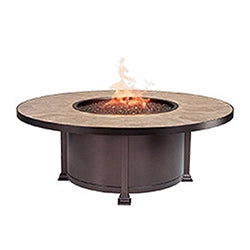
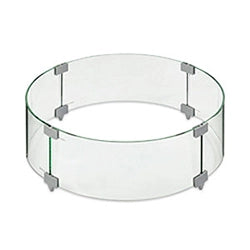


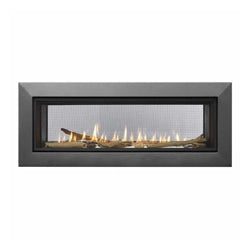

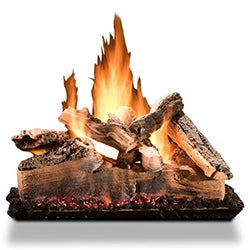
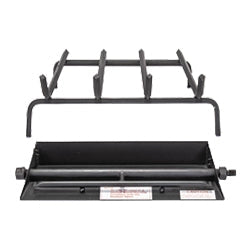
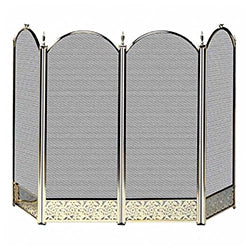


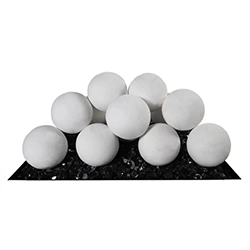







 An
An 
















